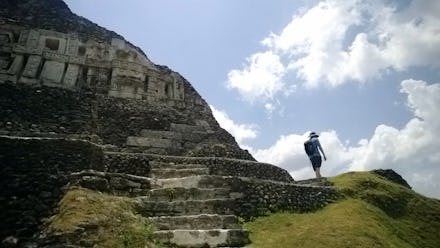15-Year-Old Canadian Boy May Have Just Discovered an Ancient Mayan City — or Just a Field

The supposed ancient Mayan city discovered on Mexico's Yucatan Peninsula by 15-year-old William Gadoury of Saint-Jean-de-Matha, Quebec, may have not been a city after all, but an abandoned field, according to Wired.
Gadoury originally hypothesized that the ancient Mayan people developed their cities based on the stars in the sky, and decided to test his theory. After covering a star chart depicting several constellations over a map of the Yucatan peninsula, located in southeastern Mexico, he discovered a correlation that no other scientist has thus far made known: The ancient Mayans built their cities based on the locations of the constellations.
"I did not understand why the Mayan built their cities away from rivers, on infertile lands and in the mountains," Gadoury told the Journal de Montréal. "[They] had to have another reason, and as they worshiped the stars, the idea came to me to verify my hypothesis. I was really surprised and excited when I realized that the most brilliant stars of the constellations matched the largest Mayan cities."
The teen found that 117 Mayan cities have a direct correlation to the stars in over 20 constellations. However, he soon realized that one city appeared to be missing and deduced that the uncovered city is in Belize, a country located on the eastern coast of Central America.
With the help of satellite imagery from the Canadian Space Agency, the Japan Aerospace Exploration Agency and NASA, the teenager identified one of the "five largest Mayan cities" ever discovered, according to the Journal de Montréal.
Some archaeologists weren't so sure Gadoury's constellation theory was correct. Maya constellations that we know of, with the exception of Scorpio, bear no relation to those we find on modern star maps," Anthony Aveni, a founder of the field of archeoastronomy, told Wired.
No one has visited the newly discovered site yet because these expeditions can be costly, according to Armand LaRocque, a remote sensing expert based out of the University of New Brunswick. "It's always a question of money. An expedition is horribly expensive." he told the Journal. But the plan is to bring Gadoury with them on a trip to the location one day.
"That would be the culmination of my three years of work and my life's dream," the young explorer told the Journal. Gadoury plans on attending the 2017 International Science Fair to showcase his findings, according to BBC News.
Read more: Scientists Just Found a New Clue About the Asteroid That Killed the Dinosaurs
May 11, 2016, 9:00 a.m. Eastern: This story has been updated to reflect that what was originally thought to be the footprint of a lost Mayan city may have been an abandoned field.